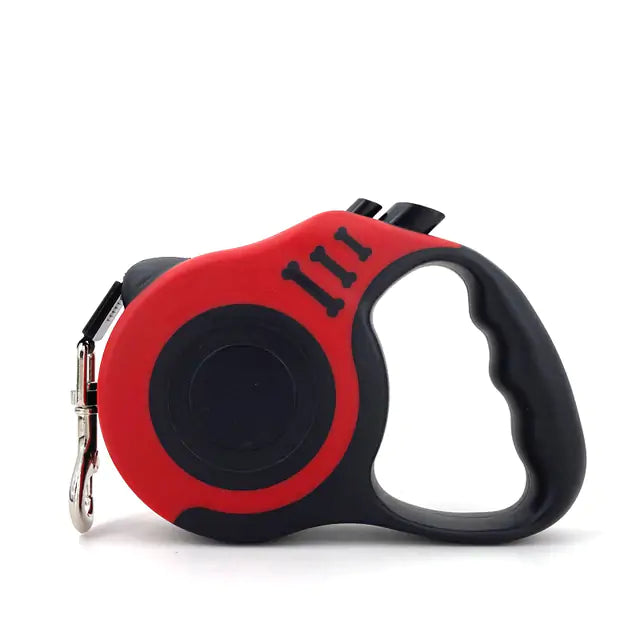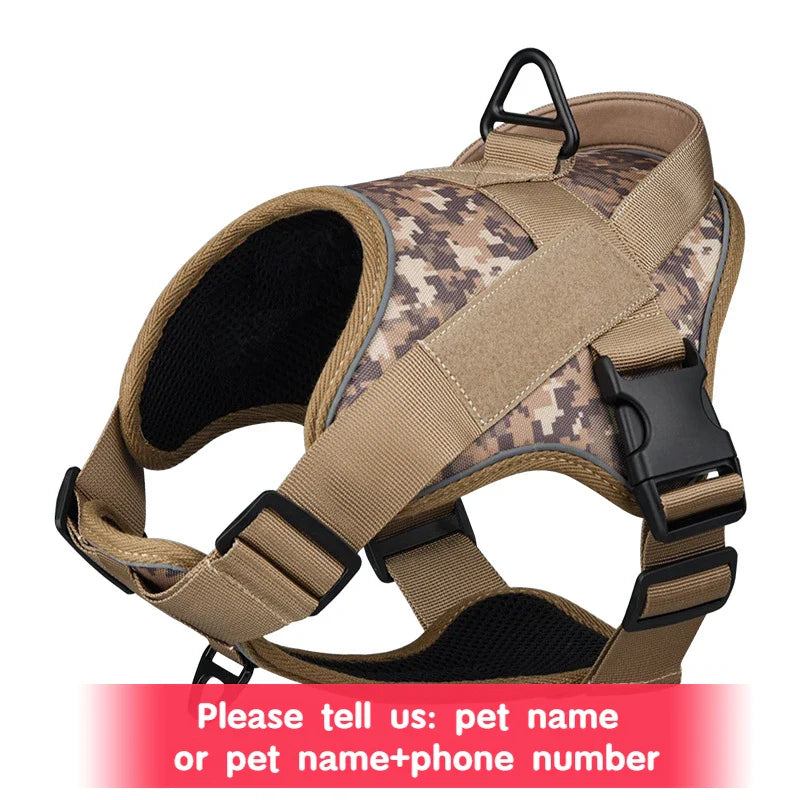When it comes to ensuring the safety and comfort of your furry friend, selecting the right dog collar is crucial. A well-chosen dog collar not only serves as an essential tool for identification and control but also reflects your dog's personality and your style. With the multitude of options available, it can be overwhelming to decide on the best one for your pet. This guide will walk you through the key considerations to keep in mind while choosing a dog collar, helping you make an informed decision.
At Nimble Wags, we offer a wide range of high-quality dog collars designed to meet the diverse needs of your pets. Whether you are looking for functionality, durability, or style, our collection has something for every dog. Shop Now and explore the best options for your furry friend!
Different Types of Dog Collars

Dog collars come in a variety of types, each designed for specific purposes and dog breeds. Understanding these types will help you choose the most suitable one for your pet:
- Flat Collars: These are the most common type of collars, suitable for everyday use. They come with a buckle or snap closure and are available in various materials like nylon, leather, and fabric.
- Martingale Collars: Also known as limited-slip collars, these are ideal for dogs with narrow heads, like Greyhounds. They provide more control without choking your dog, making them excellent for training.
- Head Collars: These collars fit around the dog's nose and neck, similar to a horse's halter. They provide greater control over dogs that tend to pull on the leash, although they require some training for the dog to get used to them.
- Harnesses: While not technically a collar, harnesses are often used in place of collars. They distribute pressure across the dog's body rather than the neck, making them ideal for dogs with respiratory issues or those prone to pulling.
- Choke Chains and Prong Collars: These are specialized training tools that should be used with caution and under the guidance of a professional trainer. They apply pressure to the dog’s neck when pulled, which can help correct behavior but may also cause injury if misused.
- GPS Collars: These high-tech collars come with built-in GPS trackers, allowing you to monitor your dog's location in real-time. They are perfect for adventurous dogs who like to roam.
Choosing the right type of collar depends on your dog's behavior, training needs, and lifestyle. Make sure to consider these factors to ensure both comfort and safety for your furry friend.
Selecting the Right Material

The material of a dog collar plays a crucial role in both the comfort and durability of the collar. Here are some common materials used in dog collars and their benefits:
- Nylon: Nylon collars are popular due to their affordability and durability. They are available in a wide range of colors and patterns, making it easy to find one that suits your dog's personality. However, they may cause irritation for dogs with sensitive skin.
- Leather: Leather collars are known for their classic look and long-lasting quality. They become softer and more comfortable with age, making them a great investment. However, they require regular maintenance to keep them in good condition.
- Biothane: Biothane is a synthetic material that combines the look of leather with the durability of nylon. It is waterproof and easy to clean, making it an excellent choice for active dogs or those who enjoy water activities.
- Fabric: Fabric collars, often made from cotton or polyester, offer a wide variety of designs and patterns. They are generally comfortable and lightweight, but they may not be as durable as other materials.
- Metal: Metal collars, such as choke chains or prong collars, are typically used for training purposes. They should be used cautiously and under the guidance of a professional trainer to avoid injury.
When selecting a material, consider your dog's lifestyle, skin sensitivity, and your maintenance preferences. A well-chosen material can enhance your dog's comfort and prolong the life of the collar.
Importance of Proper Sizing
Ensuring that your dog's collar is the correct size is *essential* for their comfort and safety. A collar that is too tight can cause discomfort, breathing difficulties, or even injury. Conversely, a collar that is too loose might easily slip off, putting your dog at risk of getting lost or encountering dangerous situations.
Here are some tips to help you determine the proper size for your dog's collar:
- Measure Your Dog's Neck: Use a flexible tape measure to determine the circumference of your dog's neck. Measure at the point where the collar will sit, typically at the base of the neck.
- Two-Finger Rule: After measuring, add an extra 1-2 inches to the measurement to ensure a comfortable fit. You should be able to easily slide two fingers between the collar and your dog's neck.
- Adjustability: Opt for a collar with adjustable sizing to accommodate any changes in your dog's neck size, whether due to growth, weight gain, or seasonal coat changes.
- Regular Checks: Periodically check the fit of your dog's collar, especially if they are still growing or have experienced weight fluctuations. Adjust the collar size as needed to maintain a proper fit.
Different types of collars may have varying sizing guidelines, so always refer to the manufacturer's instructions. By ensuring the proper size, you enhance your dog's comfort and safety, making outdoor activities more enjoyable for both of you.
Comfort and Safety Features
When choosing a dog collar, *comfort* and *safety* should be at the forefront of your decision-making process. A well-designed collar not only ensures your dog's well-being but also provides peace of mind for you as an owner.Here are some key comfort and safety features to look for:
- Padded Collars: Collars with padding can prevent chafing and irritation, especially for dogs with sensitive skin or those prone to allergies.
- Breathable Materials: Collars made from breathable fabrics like nylon or mesh can help keep your dog cool, particularly in warmer climates.
- Breakaway Mechanism: A breakaway collar is designed to release under pressure, reducing the risk of strangulation if your dog gets caught on something. This feature is particularly important for dogs that spend a lot of time outdoors.
- Reflective Strips: Collars with reflective elements enhance visibility during nighttime walks, making it easier for drivers and other pedestrians to see your dog.
- Secure Buckles: Opt for collars with sturdy, high-quality buckles that can withstand tugging and pulling. Quick-release buckles are also beneficial for easily removing the collar in emergencies.
Additionally, collars with personalized tags or integrated ID slots can provide an extra layer of security by ensuring that your contact information is always with your pet. By prioritizing these features, you can ensure your dog enjoys both comfort and safety, whether at home or on the go.
Caring for Your Dog's Collar
Just like any other accessory, your dog's collar requires regular maintenance to ensure it remains in good condition and effective. By properly caring for your dog’s collar, you can extend its lifespan and maintain its functionality and appearance.
Here are some essential tips for caring for your dog's collar:
- Regular Cleaning: Depending on the material, collars can attract dirt, moisture, and odors. Fabric collars can often be washed in a machine using a gentle cycle, while leather collars should be wiped down with a damp cloth and conditioned with leather cleaner.
- Inspect for Wear and Tear: Periodically check the collar for signs of wear such as fraying, cracking, or weakened areas, especially around the buckle. Replace the collar if you notice any damage to ensure your dog's safety.
- Dry Thoroughly: After cleaning or exposure to water, make sure to dry the collar thoroughly. A damp collar can cause discomfort and skin irritation and may also become a breeding ground for bacteria.
- Rotate Collars: If possible, have a couple of collars on hand and rotate them regularly. This allows each collar to air out and reduces wear from constant use.
- Check Fit: As your dog grows or changes weight, the fit of the collar may need adjustment. Ensure the collar remains snug but not too tight; you should be able to fit two fingers between the collar and your dog's neck.
By following these simple care tips, you can keep your dog’s collar in top shape, ensuring both comfort and safety for your furry friend.
Ready to find the perfect collar for your dog? Shop Now at Nimble Wags for a wide selection of premium dog collars and other pet accessories!




